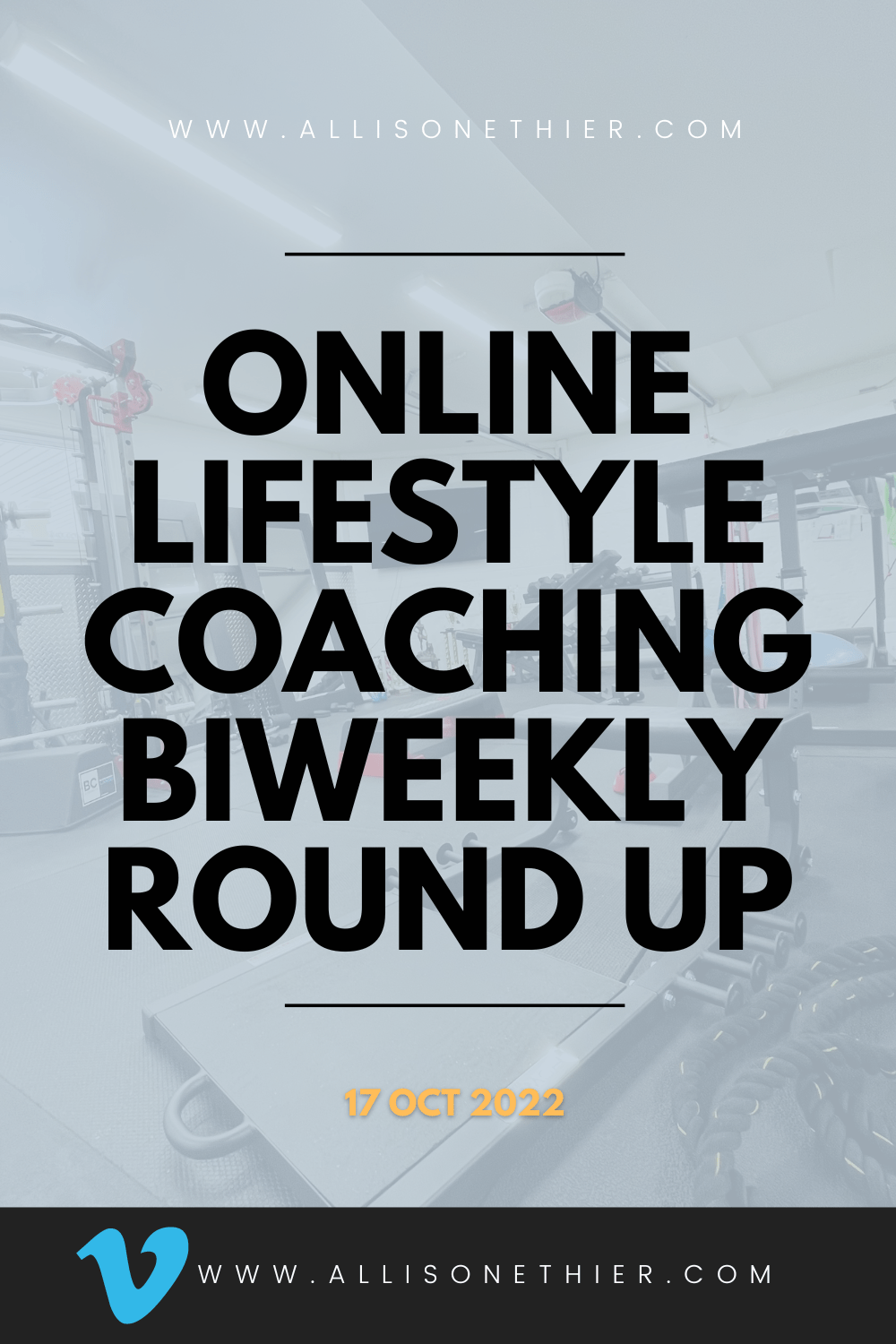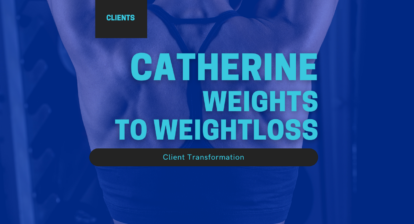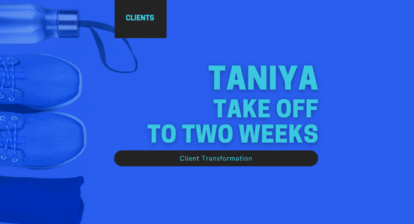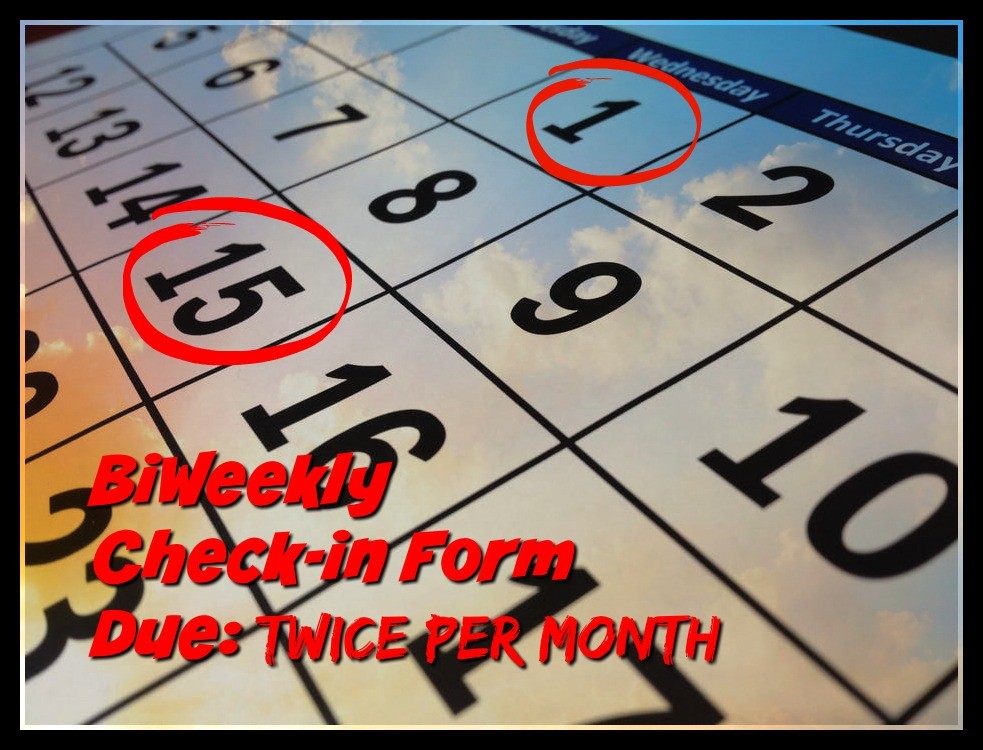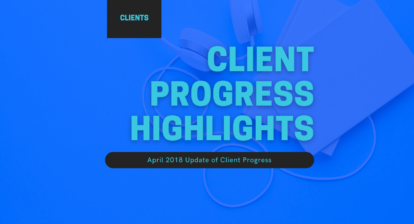
Coaching Feedback on Lifestyle Clients BiWeekly
Lifestyle online clients submit written accountability check-ins twice per month.
There are a number of topics that come up each check-in and often there is a theme within the entire check-in process and a group of online clients.
Here are some of the concepts and ideas discussed over the past 2 weeks.
1 | QUESTION OF THE MONTH
Over the past few weeks, the topic of the “timeline to get fit” has come up with a few of my online clients and in-studio personal training clients.
After the initial shock and soreness that happens when you return to training or start a new type of training program how long into that type of training will you experience the actual fun of training?
This is the point at which training starts to become a habit and part of your day/week. You being to think less about the technical aspects of the movement.
It has been my experience that around the six-month mark training starts to move you out of the beginner phases and into the more focused practice type of training.
This concept really came to light recently, as I have been following a client since January, and recently she pulled for a deadlift of around 240 pounds just last week. From around 15lbs of a deadlift to 240lbs…that is some serious strength. The timeline is greater than 6 months, but in the context of your life, nine months is short.
Having objective goals (outside of esthetic ones – ie weight loss) meaning actually coming up with a number that you would like to achieve on the bar is always a great way to stay motivated because then you can accurately track your progress. Plus, lifting heavy weights, builds strength, muscle, and metabolism-boosting body confidence.
2 | LOGGING FOOD
Lifestyle coaching clients receive their macros and calories. Do you have to track macros and calories in order to lose weight?
Not always, however, it is one objective way that you can accurately track what you’ve been eating, and the quality of your food sources.
The logging clearly shows you where might be eating too much or perhaps not eating enough and be able to adjust your plan accordingly to see success faster. Those who track their food (even by eyeballing) do better because they stay conscious in the process just like taking care of the finances of your household.
What gets measured gets managed.
3 | START WITH THE END
One trick, I often recommend, once you have your calorie and macronutrient values, is to start with the end in mind.
You take the foods, you would love to eat off plan that day, log them first, and then build your day backwards from this special occasion meal.
That way you stay within the caloric limit, (or within range), can enjoy foods that are not every day, and still keep your fitness goals in mind.
4 | Portion Guides
Under the daily habits, in the coaching platform, there are 3 habits given in order to help align your everyday habits with the fitness goals you have set for yourself. The portion guide is to ensure that your meal is balanced. This is also called the hand portion measuring guide.
For instance:
palm of the hand = portion of protein
handful = portion of vegetables
thumb = portion of fats
first = portion of carbs
It is a quick and dirty method to eyeball portion sizes while you’re on the road.
5 | UPPER BODY & LOWER BODY WEIGHT PROGRESSIONS
With every training program there comes a point at which you will build strength, and you will either have to add reps and/or load to progress your results. The following are the recommendations are for the upper body and lower body to know how to add weight to the bar, and thus continue to get stronger.
The Upper Body | 2.5-5lbs
For complete newbies to weight training sometimes increments of 1 pound are the best loading recommendations as going from a 2.5 way to a 5lbs weight, doubles the load. Up until 10lbs, having dumbbells of 2, 4, 6, 8, and 10, are recommended, and sometimes, 1lbs dumbbell increments can be a good investment.
The Lower Body | 5-10lbs
Your lower body tends to be stronger than the upper body, and thus can handle heavier loads, than the upper body.
Once you are maxed out for reps, adding weight is a way to get stronger, while staying at the recommended rep range. Remember, if using two 2 x 5lbs dumbbells = 10lbs. If using one dumbbell (usually determined by the exercise) 1 x 5lbs, will determine the increase in load used.
6 | PROGRAM DESIGN & TIMELINE
This is a small reminder about your program and the timeline for which it is designed.
Most programs are designed for somewhere between four and eight weeks however if you are sick or are not completing enough of the workouts within that program, we can adjust and add weeks to that program.
Your program is designed to progress you from one phase of your training to the next. If too few of the workouts within the previous program are complete, you’re not progressing in a way that the next program will be effective for you.
The recommended minimum is at least six workouts of each of the workouts designed within that program. For lifestyle coaching there’s always the three-hour minimum that you must meet within your main program. You always are given options for more workouts within that week, with 1-off workouts, or bonus training.
These recommendations are total weight added, not per dumbbell.
7 | POSITIVE SELF-TALK
There are times in our life when we recognize that we have certain habits that are not meeting how we want to be in our life. We can adjust those old habits and replace them with more positive habits or we have to drop those habits altogether.
It can take a significant amount of time to relearn things that we have habitually practised. We might be re-learning or filling in the gaps of the information or trying to re-educate on your health and fitness topics, and what might be important for you right now.
This is just a small reminder to remain aware of your thinking and how those thoughts affect your mindset. You can talk yourself into or even talk yourself out of habits that are not currently meeting your fitness or lifestyle goals.
SUMMARY
- It can take 6 months to really get into your training
- Use the hand measuring trick, when eyeballing your food
- Start with the end in mind, to have the foods you love while staying on track.
- A reminder of the load recommendations for the upper and lower body.
- Your program is designed for proper training progression.
- Use positive self-talk to change lifestyle habits and mindset
Chat soon, see for the next biweekly lifestyle client update.
Work hard, Be amazing.
Coach, A.

